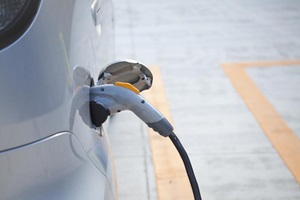- Fast Charging
- DC Fast Charging
- Transportation Efficiencies
- EV Charging
- EV Charging
Finding Value in Public EV Charging Infrastructure

Although the chicken/egg debate still looms over EVs and public charging infrastructure, the market is now moving forward under the assumption that mass adoption of EVs will require a sufficient network of public charging infrastructure. Public fast charging infrastructure along highways enables regional travel, and fast chargers in and around metro areas can support drivers who don’t have a home charger. Guidehouse Insights expects EV supply equipment sales to grow from around 875,000 in 2017 to over 6 million in 2026 to meet the needs of the growing EV market.
Public Charging Availability Bolsters the EV Market
Public chargers represent a relatively small percentage of this total growth, but well-established and reliable public charging networks are considered an important factor for prospective EV owners. Publicly available charging networks give consumers the confidence that an EV will serve their driving needs, even if they are likely to do the vast majority of their charging in-home.
The business case for public charging remains difficult. For the private sector, high installation costs and low utilization rates can make it difficult for any profit-driven business model, particularly for a business model that only uses pay-to-use as its source of revenue. In addition, any profit-driven business model for the buildout of EV charging infrastructure encounters challenges of providing sufficient and equitable charging networks throughout entire communities.
Examining Business Drivers
What are the business models that will drive the rollout of public infrastructure that Guidehouse Insights’ forecasts project?
- Automaker investments: These are a key driver to fast charging networks, with OEMs looking to replicate the Tesla Supercharger network model—but not necessarily as a free-to-use option.
- Retail partnerships: Retail businesses have been popular targets for EV charging networks, with charging typically provided for free and seen as a tool to attract customers and increase sales. If the rollout of fast chargers in metro areas takes off, retail outlets would also be good locations because they would provide the driver something to occupy their time during a 15-minute charging session. There are also hypothetical business models that would use revenue-sharing strategies to offset costs of public chargers while still capturing the increased sales revenue from EV customers.
- Electricity demand and grid services: Many utilities are interested in the value that EVs can provide. A utility-provided charging network may provide a utility with increased electricity sales in the long run. It could also provide the ability to utilize EVs for grid services through the utility's provided chargers, which could offset costs in the long term.
- Equitability: Public sector stakeholders that see equitable charging access as a priority may be able to justify the use of public funds for the increased equitability of the charging network. For some public agencies, decarbonization goals will also drive investment.
Visibility Is Crucial
If EVs are to continue to penetrate the market at an increasing rate, prospective buyers will need to see charging networks that support their use and enable them to travel without range anxiety. Identifying value will be critical for the rollout of publicly available charging infrastructure, which in turn has an impact on EV sales growth.